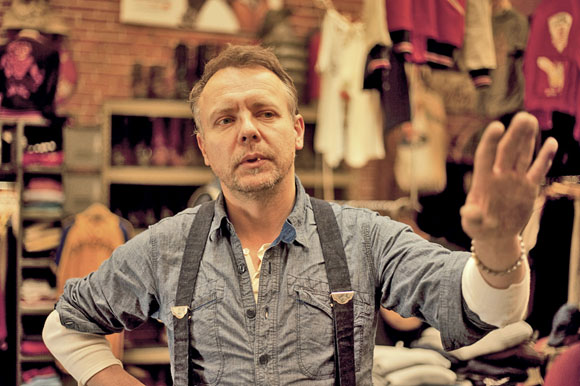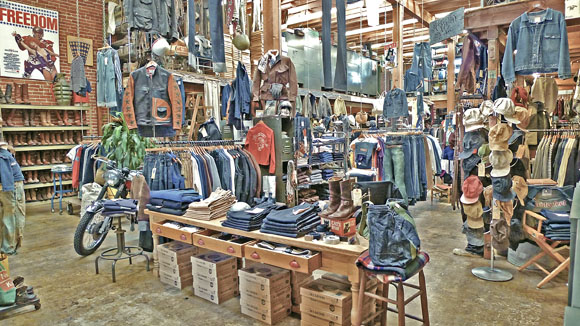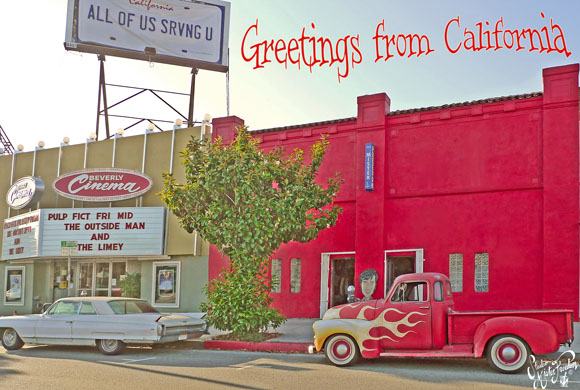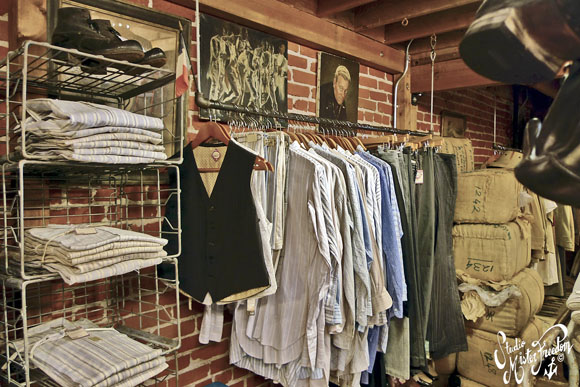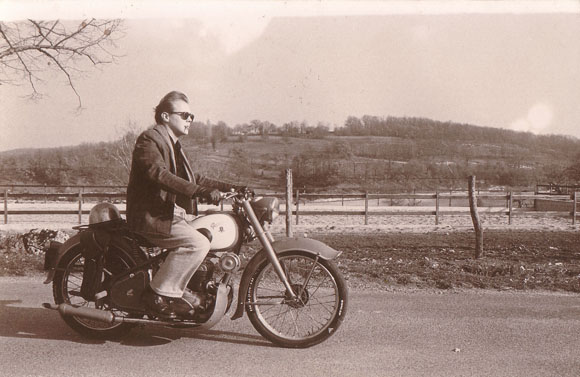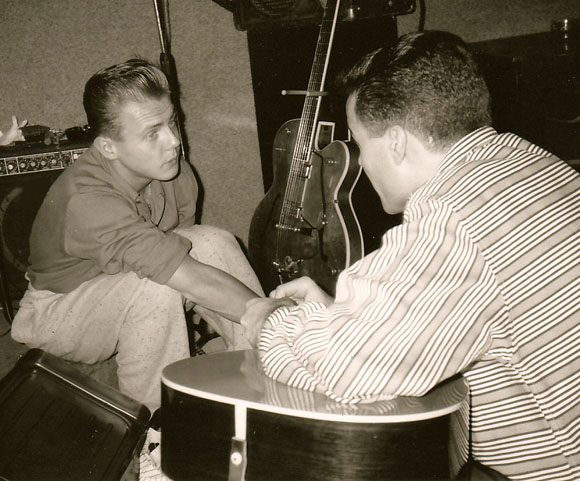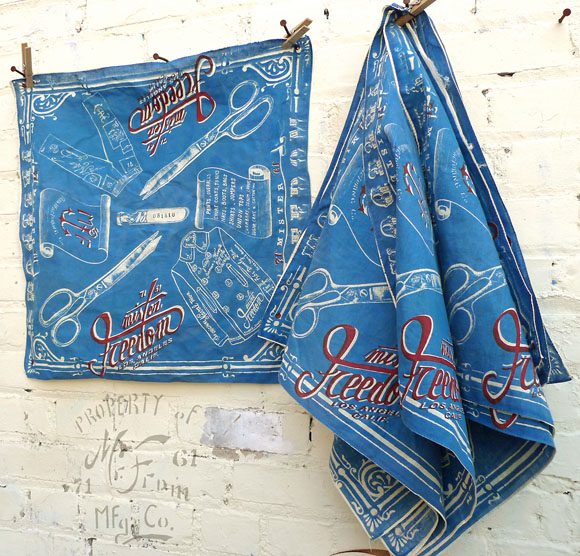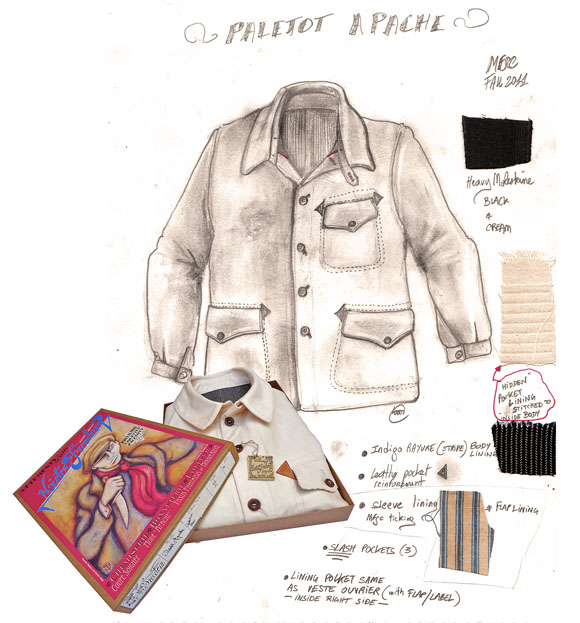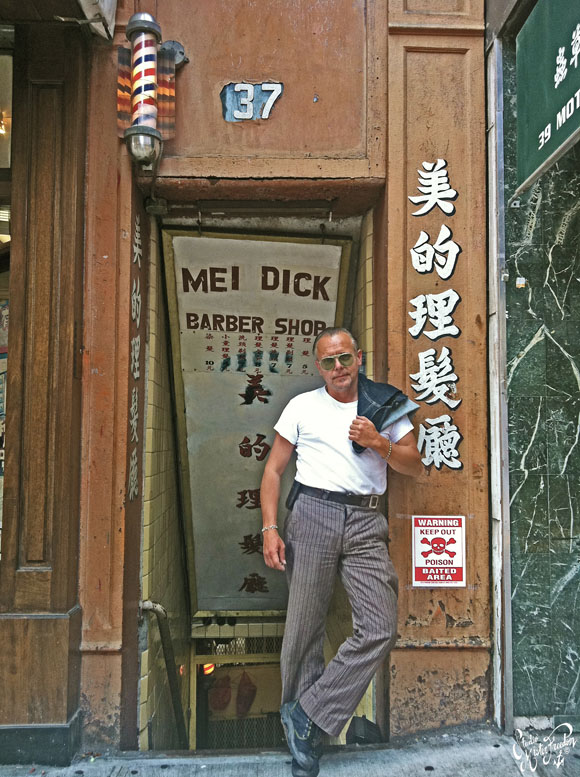NAME: Christophe Loiron
RESIDES: Los Angeles
OCCUPATION: Mister Freedom
Schooled in Zaire, Frenchman Christophe Loiron has long been a resident of Los Angeles, where he opened his label and store Mister Freedom in the early 00s.
Loiron claims no allegiance or links with the London pop art boutique Mr Freedom run by Tommy Roberts – the subject of my next book – but pays tribute with a display of an orange jumpsuit from the store he picked up a few years back.
Loiron is forthright – I like his online Hall Of Shame where he numbers those who have appropriated designs – and inventive (a new range includes trousers made from coutil, woven corset cloth) in a field too observant of notions of correctness.
Here he covers the waterfront, from his “Hud period” to altering naval issue trousers during a spell in the Marine Nationale to never buying new clothes.
“There’s enough being recycled out there to flip your wardrobe when you feel like it,” says Loiron. “Things are never entirely your’s anyway; you just take care of them for a while.”
How would you describe your style?
It evolves according to the concepts for my collections. The clothes are based on simple scripts featuring the made-up wardrobe of a fictitious character in a historically plausible situation.
These aren’t replicas for re-enactments, but clothes that could have existed but didn’t. The stories are influenced by movies, memories, old photos and tales I hear and read about. I tend to get into character and always “road test” and wear prototypes before the official release.
The latest collection Les Apaches was inspired by Parisian gangsters in the Paris of the Belle Époque. So lately, I’ve been wearing calico-printed shirts, coutil trousers, moleskine stripe waistcoats and silk scarves.
Of course I mix things in a lot, so that I don’t look straight out of the set of Casque d’Or or Pépé le Moko. I mismatch often. I will throw in my favorite denim or a pair of motorcycle boots with 1900s French dandy gangster stuff. And something vintage as well, so that it’s not period costume, but my own thing.
I don’t really participate in the well-being of the clothing industry since I don’t buy anything new, and the malls have yet to ring up a sale from me. The only new clothes I own are from Mister Freedom because they match how I feel.
How has your look changed over the years?
I got to clothing via music. They went together for me. I was a bit of a purist as a kid. I used to play a lot of old stuff from Eddie Cochran to Django Reinhardt. Anywhere I’d end up going, I’d rummage the flea markets to find clothes that appealed to me and made sense with what I was playing.
In my Rockabilly days, I wore gabardine shirts, pleated slacks and suits. On rowdy days, it was the Wild One gear: white T-shirt, rolled up worn 501s and a good, old motorcycle jacket.
Aside from the musical influence, I’ve had my Hud period and my Treasure of the Sierra Madre and Salaire de la Peur days…
My look changes according to my mood and the tasks at hand. I wear denim and chambrays when I know I’m getting dirty at work. But I also don’t mind riding my motorcycle with stripe slacks and a wool shawl collar cardigan.
When did you adopt your trademark look?
I started very early on altering clothes I found. Not sizing but details. I’d paint stuff on the back of my jackets. When I was living in Zaire in the late 70s and early 80s I borrowed my Mum’s sewing machine to add contrast side details to a pair of plain gabardine slacks (I’d seen photos of Gene Vincent wearing something similar).
People already thought I was a weirdo at school (imagine Kinshasa in 1981 with a pompadour and “Hollywood” slacks), so that was confirmation for most. I also altered my Government-issued flared wool pants when I was in the Marine Nationale around 1986. I thought the leg was too wide so I took them in – a big no-no in the military!
I started making clothes and accessories under the Mister Freedom label around 2002. At first I was selling one-off originals to designers, then supplying a few Japanese stores with custom hand-made things, often recycling and modifying vintage pieces. I also got into doing graphics on T-shirts, stencilling or silk-screening.
Things are more together now with the concept collections. I make exactly what I want and do not depend on orders, demand or trends. I take risks. If it works, it works. If it doesn’t, then I have plenty clothes to wear!
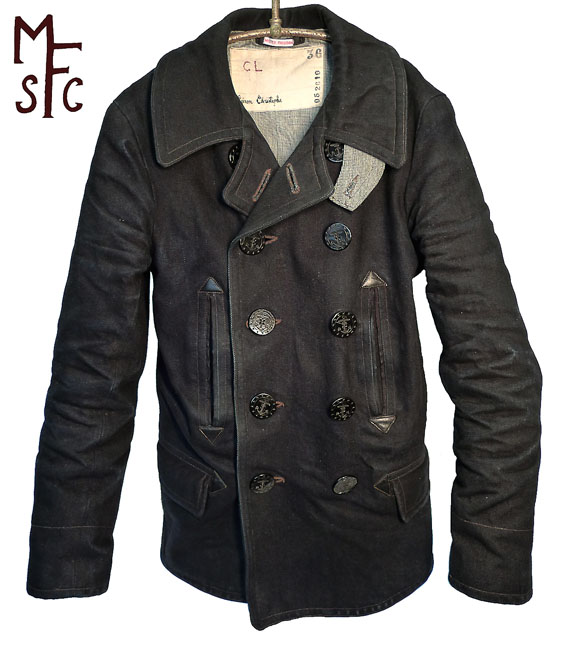 Mister Freedom peacoat.[/caption]
Mister Freedom peacoat.[/caption]
Do you keep clothes/have you a big wardrobe?
I’m a hunter, but for the hunt not the kill. I don’t collect anything and do not like the idea of being burdened by many possessions. I like the one suitcase and a guitar cliché.
I keep vintage clothes until I don’t wear them anymore. Of course there are some pieces I wish I had not let go of, but the thrill of finding something similar one day is greater to me than the pleasure of owning it already.
In the recent past, I’ve kept the clothes I’ve made and worn them till they fray. Each nick, repair or fade is attached to a situation or moment. It’s a personal archive I like to dig into when choosing what to wear.
What garment would you like to wear/have most in the whole wide world?
Nothing really. I would like to see some specific pieces, have them in my hands for a minute, but that’s all. The list is long.
Is there a period in fashion with which you align yourself?
Because music influences what I like and research, the span is pretty much 1910s to 1960s. The craftsmanship, seam techniques, fabrics used and construction are important to me.
But there are interesting details in all periods, and although not a fan of polyester, I find some 1970s items inspiring. Pocketing and darting on late Nudie The Rodeo Tailor gear are pretty wicked to look at. Early textiles from around the world, the ways in which they are dyed and weaved, also influence my choice of fabrics.
What’s your style tip of the moment?
A style tip from me would be to not follow style tips from strangers!
Who sums up the word “stylish” for you?
The notion of “good style” is very subjective. What a so-called stylish person wears has to look real, neither temporary nor contrived.
It also has to look very personal. It has to say “I’m smart”, pun intended, in the sense of “I am bright and not a victim” as much as “it looks good on me”. That’s the essence of cool to me.
Who has/had that? I think Paul Newman did. Yeah, I know that’s too easy…
Would you like to support Flashbak?
Please consider making a donation to our site. We don't want to rely on ads to bring you the best of visual culture. You can also support us by signing up to our Mailing List. And you can also follow us on Facebook, Instagram and Twitter. For great art and culture delivered to your door, visit our shop.
